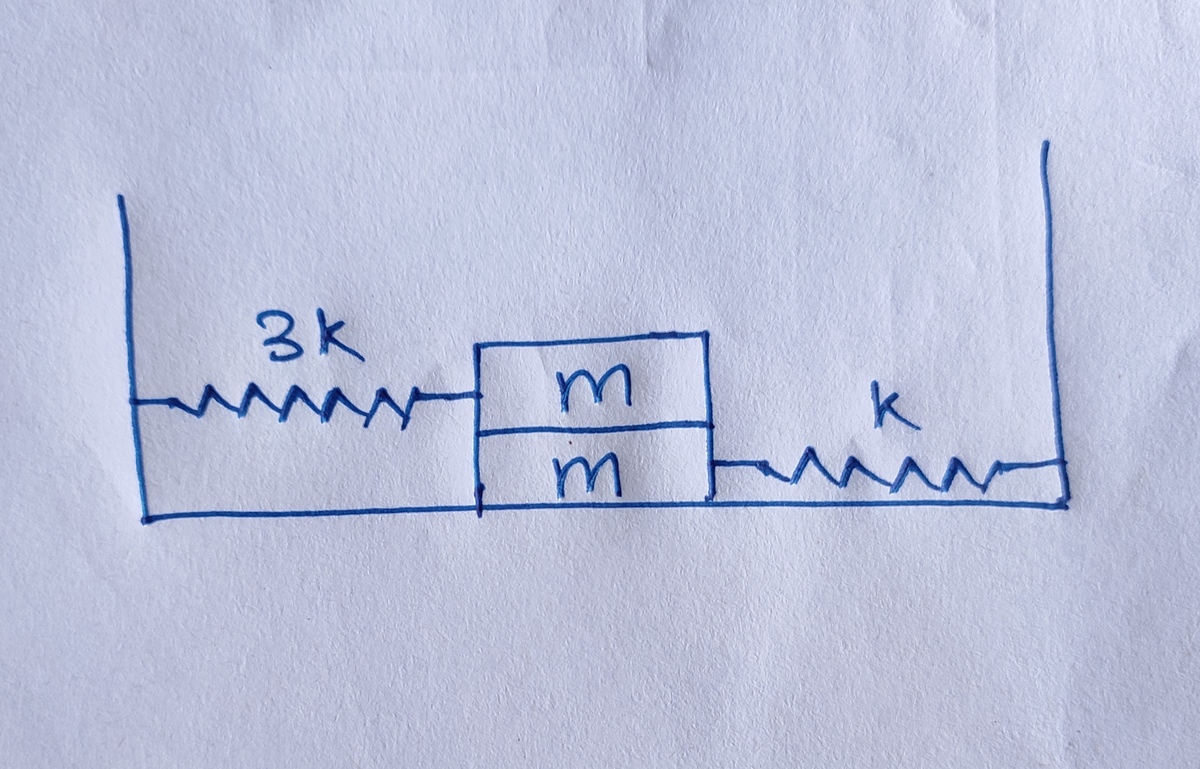Block and Spring

When the arrangement shown is in equilibrium, the spring on the right
is stretched by an amount
Coefficient of static friction between the blocks is and the horizontal floor is frictionless. Both the blocks have equal mass and the horizontal floor is frictionless. Both the blocks have equal mass and force constants of the spring are and as shown in the figure.
The maximum amplitude of oscillations of the blocks along with the springs that do not allow them to slide on each other is in the form where the acceleration of free fall is .
What is the sum of constants .
The answer is 0.
This section requires Javascript.
You are seeing this because something didn't load right. We suggest you, (a) try
refreshing the page, (b) enabling javascript if it is disabled on your browser and,
finally, (c)
loading the
non-javascript version of this page
. We're sorry about the hassle.
What is to be submitted as the answer is not given. Let us assume that it is α + β .
Initially it is not told whether the spring on the left has any stretch or not.
Equilibrium condition is : Applied force ≤ limiting value of friction force . It is not told whether the system impends motion initially (the two forces are equal). Let us assume that they are equal : k x 0 = μ m g
Let the maximum stretch of the right spring, which determines the amplitude required, be x . Then
3 k ( x − x 0 ) + μ m g = k x ⟹
x = 2 3 x 0 − 2 k μ m g
So α = − 2 1 , β = 2 1 , and α + β = 0 .